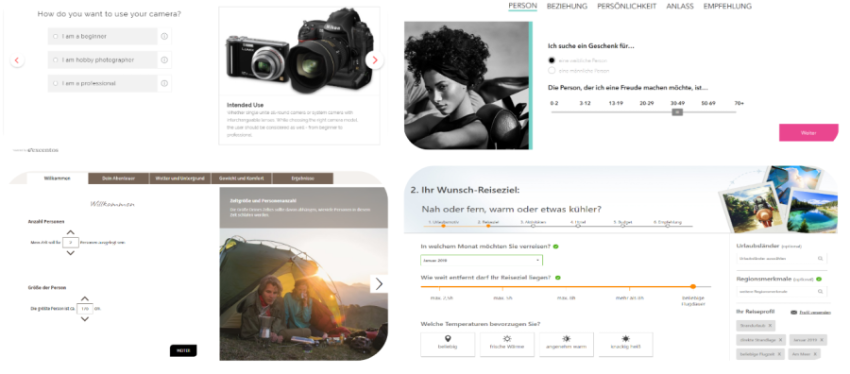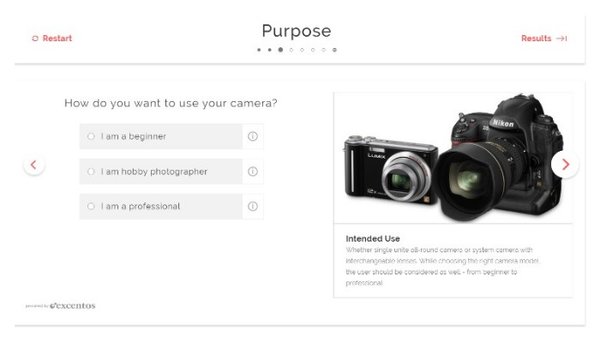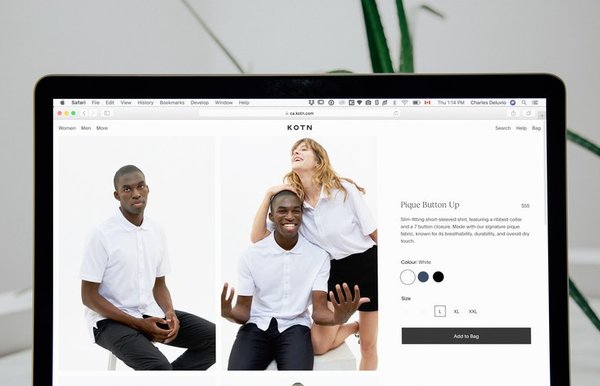
Online shopping is changing and as the pace of life gets quicker, customers want to find their perfect product and check out within minutes. Forward-thinking companies are starting to introduce Guided Selling techniques such as Product Guides to try keep up with online consumer buying trends, improve the online shopping experience and help consumers make the right choice. Here's why Guided Selling is revolutionising online shopping and how your business can create a Product Guide successfully and increase revenue.
Time is money
In a world of choice overload, your online shoppers can easily become overwhelmed. Endless search pages amass with irrelevant,
unfiltered products can lead your customers to give up their search entirely. Product Guides prevent this from happening by acting as a virtual product advisor.
Creating a Product Guide for your website visitors is the perfect opportunity to ask them a few quick and relevant questions which allows AI and Guided Selling
technology to get to know them better. They can then be guided towards their perfect product and away from irrelevant ones - saving your customer both time and energy.
A dating app for products?
Product Guides work on a very similar concept to dating apps, the user states what they want and what they don't want so that AI can filter out all the unsuitable matches and present them with their perfect suitor. Likewise, Product Guides aim to deliver the user a product match which makes them fall in love at first sight. So, how do you build a Product Guide? We’ve compiled a few top tips to help you! This way, you will point your customers in the right direction and give them an enjoyable online shopping experience.

1. "Setting goals is the first step in turning the invisible into the visible"
-Tony Robbins

Defining your target group and different customer segments is the first step in identifying which kind of your products could suit which kind of customers.
Try and get into your customer’s head and ask yourself whether their age or gender could affect their decision in choosing a certain product.
Maybe style preferences or income could also come into play. However, it really does depend on your product. Questions could be anything from asking a
customer's skin type to advise on moisturizers or desired MB speed to advise on broadband deals.
Take this Rolex watch for example:

What kind of person pops into your head when you look at this watch? What questions and answers would you provide the target group of this product in your Product Guide so that they would be directed to this suitable recommendation?
2. “The most simple things can bring the most happiness”
- Izabella Scorupco

Make life easy and don’t leave your customers guessing. Ensure you have clear and recognizable product names and simple filters which help your customer choose
and define what they want in a product.
For example, if you are an online fashion retailer and would like to create a Product Guide which aims to help people
find their perfect pair of jeans, the most relevant questions and answers you could pose would naturally be about style and cut.
Although, you must choose your
wording carefully, e.g. would your target group for jeans be more aware about the expression "boyfriend fit" jean or "baggy loose-fitting" jean?
3. “An expert knows all the answers - if you ask the right questions”
- Levi Strauss

Chat with the people who know your customers best: your sales and marketing team. Get insights into what your different customer segments look for in your products
and their typical buying behaviours.
Think about what features are particular to certain products and are also sought after by customers.
For example,
someone who would like to buy a camera for their job as a professional photographer will have a different budget and requirements to someone taking it up as a hobby.
Guided selling technology is able to distinguish which of your products suit which kind of customer.
4. “Visual storytelling utilizes both language and art to pass on the essence of who we are”
- Debbie Millman

Choose a theme which tells your brand’s story and make sure your language and image choices stylistically fit the essence of your business.
Align your Product Guide with your vision, strategy and marketing message - just like you would with any other content piece.
Your Product Guide should engage your customers and make online shopping a more enjoyable experience as well as seamlessly integrate into your website layout.
Canadian clothing label KOTN provides their customers with good quality cotton essentials, hence the simplistic, pure white color theme.
5. ”Quality is never an accident; it is always the result of an intelligent effort”
- John Ruskin

Quality assurance is an important final step before sending your Product Guide live. Make sure to test out its usability with your customers.
Your chosen questions and answers should be easy to understand and direct your customer to a suitable product within a reasonable timeframe.
For most Product Guides, 2 minutes is a sufficient amount of time for your customer to complete the questionnaire and be directed to their perfect product.
However, we have experienced companies with more complex products whose Product Guides require up to 5 minutes - and this is totally fine as long as your
questions and answers remain relevant and easy for the customer to follow.
The worst thing would be for the customer to give up filling out the Product
Guide half way through - a Product Guide is basically a form of marketing so it's vital to keep it interesting and engaging like you would for any other piece
of marketing content
6. “Marketing is really just about sharing your passion”
- Michael Hyatt

You can make the best Product Guide ever but if your customers can’t easily find it, then they can’t enjoy it!
Provide as many links to your Product Guide as possible and use top-level URLs with relevant keywords, e.g. www.yourbusiness.com/productguide.
Creating a cool banner which links to the Product Guide is also a handy way to attract your customers into using the guide.